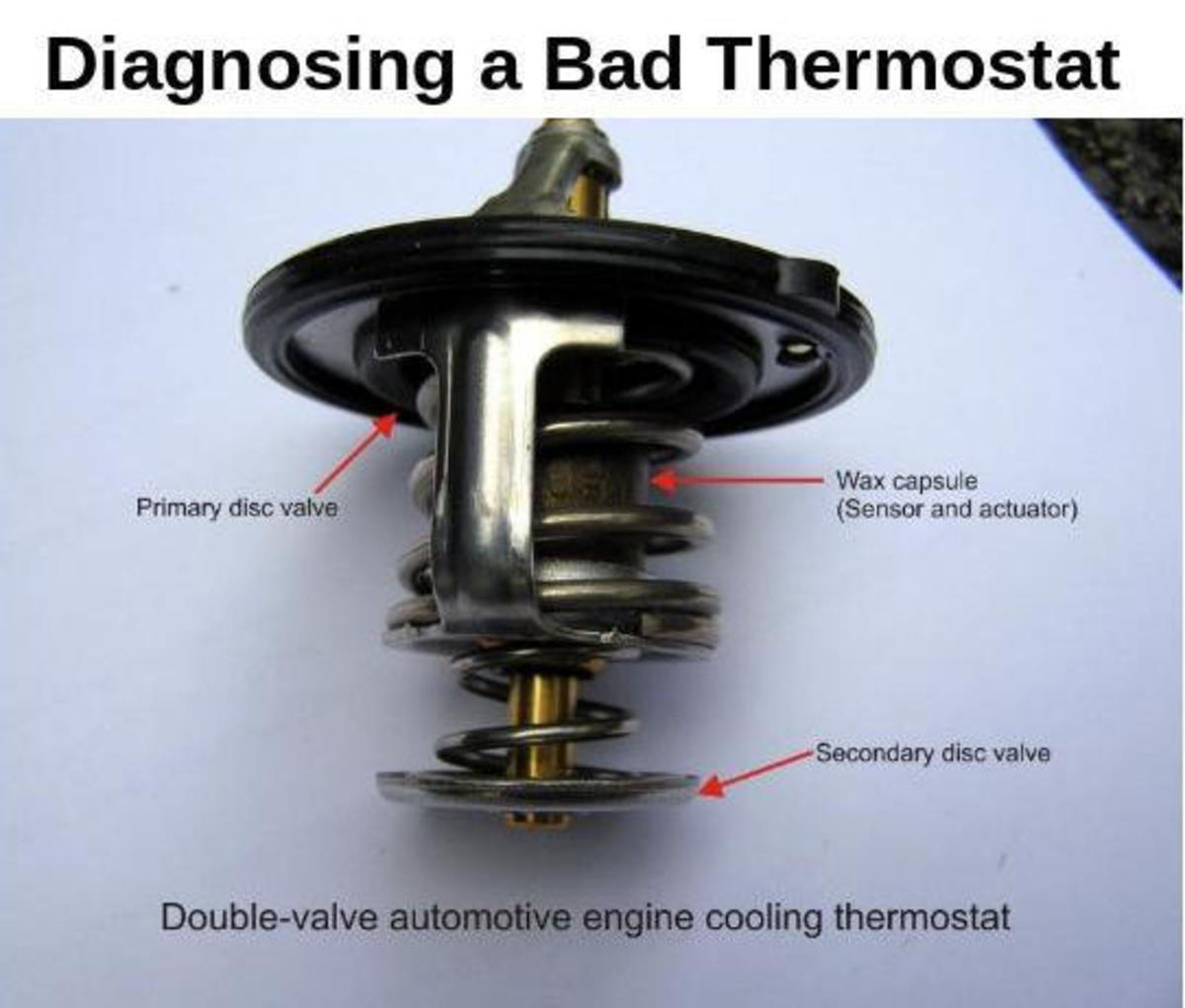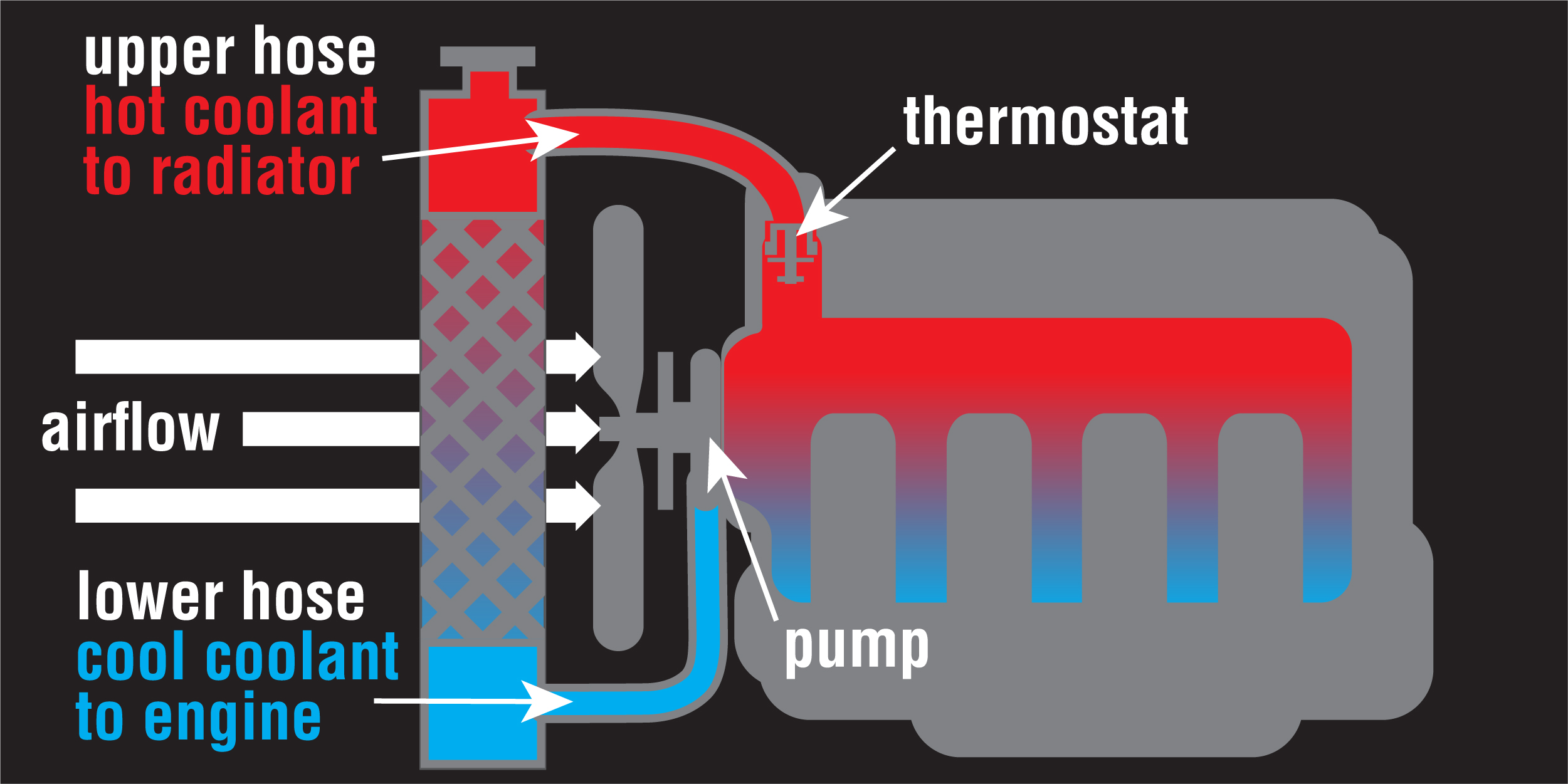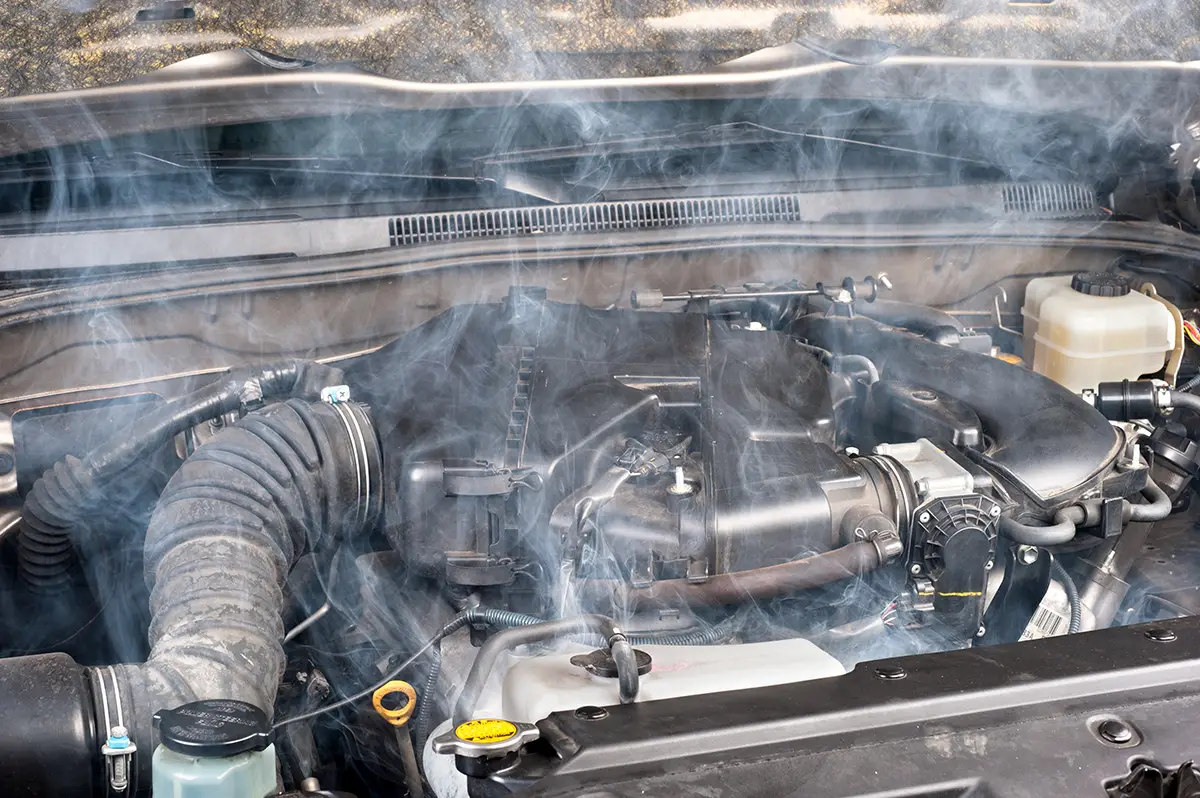Check Best Thermostat Pricing in Amazon
** As an Amazon Associate, I earn from qualifying purchases.
Yes, a bad thermostat can cause overheating. A malfunctioning thermostat may prevent coolant from flowing properly.
This can lead to your engine becoming dangerously hot. Your car’s thermostat is a small but crucial part of its cooling system. It regulates the flow of coolant between the engine and radiator. When it fails, the engine can overheat quickly, causing potential damage.
Overheating can lead to costly repairs and breakdowns. It’s vital to understand how a bad thermostat can impact your vehicle’s performance. In this post, we’ll explore the signs of a faulty thermostat, how it affects your engine, and what steps you can take to prevent overheating. Keep reading to ensure your car runs smoothly and avoid unexpected issues on the road.
Role Of A Thermostat
A bad thermostat can cause overheating in your vehicle. It fails to regulate the engine temperature, leading to potential damage. Regular checks can prevent this issue.
The role of a thermostat in your vehicle is crucial for maintaining optimal engine performance and longevity. A malfunctioning thermostat can lead to various issues, including overheating. Understanding how it works can help you identify problems early and take necessary actions.Function In Engine Cooling
A thermostat regulates the flow of coolant between the engine and the radiator. It stays closed when the engine is cold to allow the engine to warm up quickly. Once the engine reaches a certain temperature, the thermostat opens, allowing coolant to flow through the radiator, helping to dissipate heat. Imagine driving on a hot summer day. If your thermostat remains closed, it can prevent coolant from circulating, causing your engine to overheat. This could lead to costly repairs and even engine failure.Importance In Temperature Regulation
Maintaining the right engine temperature is vital for your vehicle’s performance and efficiency. A properly functioning thermostat ensures the engine operates within a specific temperature range. Have you ever noticed your engine temperature gauge fluctuating wildly? A faulty thermostat might be to blame. It can cause your engine to run too hot or too cold, affecting fuel efficiency and overall performance. When your thermostat fails, it can stick open or closed. Both scenarios are problematic. A stuck-open thermostat can lead to poor fuel economy and increased emissions, while a stuck-closed thermostat can cause engine overheating. In essence, the thermostat is a small but mighty component. It’s essential for keeping your engine in peak condition. Monitoring its health and replacing it when necessary can save you from significant headaches down the road. Have you ever faced engine overheating issues? Could a faulty thermostat be the hidden culprit? Share your thoughts and experiences below!
Credit: www.capitol-chevy.com
Signs Of A Bad Thermostat
A bad thermostat can lead to engine overheating. Symptoms include fluctuating temperature readings and coolant leaks. Immediate attention is needed to avoid severe damage.
When your car starts showing signs of overheating, your first suspect might be a faulty thermostat. The thermostat is like your car’s gatekeeper, controlling the flow of coolant to the engine. If it goes bad, it can lead to overheating and potentially serious damage. But how can you tell if your thermostat is on its way out? Let’s dive into the signs of a bad thermostat.Erratic Temperature Readings
One of the earliest signs of a bad thermostat is erratic temperature readings on your dashboard. Have you ever noticed your temperature gauge bouncing between hot and cold? This could be your thermostat failing to regulate the engine temperature properly. A functioning thermostat keeps the needle steady. If you see fluctuations, it’s time to get it checked.Engine Overheating Symptoms
The most obvious sign, of course, is engine overheating. You might notice steam coming from under the hood. Or maybe your engine starts to smell hot. In some cases, your car might even go into a ‘limp mode’ to prevent further damage. Ignoring these signs can lead to costly repairs. If your engine overheats frequently, it’s a clear sign that your thermostat might be stuck closed. This prevents coolant from circulating and cooling the engine. So, next time you experience any of these symptoms, don’t ignore them. Check your thermostat. Your car and wallet will thank you!How A Faulty Thermostat Causes Overheating
A bad thermostat can cause your car’s engine to overheat. It fails to regulate the engine’s temperature properly. This can lead to serious damage.
A faulty thermostat can lead to your engine overheating. The thermostat regulates the engine’s temperature. If it fails, it can cause serious problems. Understanding how it works is key to preventing damage.Blocked Coolant Flow
A thermostat stuck in the closed position blocks coolant flow. This prevents the coolant from reaching the engine. Without proper cooling, the engine temperature rises. Prolonged overheating can lead to engine damage. A blocked coolant flow also affects the radiator. The radiator can’t release heat properly. This further increases the risk of overheating. Regular checks can help catch this problem early.Incorrect Temperature Management
A faulty thermostat can mismanage engine temperature. It might open too late or not at all. The engine then runs hotter than it should. This constant high temperature can cause wear and tear. Incorrect temperature management also affects fuel efficiency. The engine works harder, burning more fuel. This not only increases costs but also adds to engine stress. Simple maintenance can prevent these issues. Understanding these points can help maintain your car’s health. A well-functioning thermostat is crucial for engine performance. Regular checks and maintenance are key. “`Diagnosing A Thermostat Issue
A bad thermostat can cause your car engine to overheat. This issue occurs when the thermostat fails to regulate engine temperature. It’s important to check the thermostat if your car shows signs of overheating.
Diagnosing a Thermostat Issue Having trouble with your car overheating? A bad thermostat might be the culprit. Diagnosing the issue can save you from costly repairs. But how do you know if your thermostat is the problem?Visual Inspection
Start with a simple visual inspection. Look for any obvious signs of damage or wear on the thermostat housing. Check for leaks, corrosion, or cracks. Is the thermostat housing covered in rust or dirt? This could mean it’s not functioning correctly. Also, ensure all connections and hoses are secure. Loose connections can cause erratic temperature readings.Testing With Temperature Gauge
Next, use a temperature gauge to test the thermostat. This tool helps you see if the engine temperature aligns with the thermostat’s opening and closing. Place the gauge near the thermostat housing. Start your engine and let it warm up. Monitor the gauge as the engine heats up. Does the temperature rise steadily or spike suddenly? A sudden spike could indicate a stuck thermostat. You can also use an infrared thermometer for a quick surface temperature check. Aim it at the thermostat housing to get an accurate reading. Diagnosing a thermostat issue isn’t just for mechanics. With a few simple steps, you can identify if your thermostat is causing the overheating problem. Save time and money by catching the issue early.Preventing Thermostat Problems
A faulty thermostat can cause overheating in your vehicle. It may fail to open, blocking coolant flow. This leads to excessive engine heat.
Preventing thermostat problems is key to avoiding overheating issues in your vehicle. Taking proactive steps can save you from unexpected breakdowns and expensive repairs. Here are some practical tips to help you keep your thermostat in good condition.Regular Maintenance
Regular maintenance is essential for preventing thermostat problems. Check your car’s thermostat during routine oil changes. It’s a small step that can prevent big issues. Look out for signs of wear and tear. Rust or corrosion on the thermostat can indicate a problem. Address these issues early to avoid overheating. Create a maintenance schedule. Regular checks ensure that small problems don’t escalate. Consistency is crucial for the longevity of your thermostat.Timely Replacement
Timely replacement of the thermostat can prevent overheating. Don’t wait for a complete failure. If your car’s heater isn’t working properly or your engine temperature fluctuates, it might be time to replace the thermostat. Consider the age of your thermostat. Most experts recommend replacing it every 50,000 to 100,000 miles. This small investment can save you from costly engine repairs. Consult with a mechanic if you’re unsure. They can inspect the thermostat and suggest if a replacement is necessary. It’s better to replace a failing thermostat than to deal with an overheated engine. In my experience, I once ignored the signs of a failing thermostat. It led to my car overheating in the middle of a road trip. That mistake cost me more than just money; it also ruined my vacation. Don’t let that happen to you. Regular maintenance and timely replacement are simple yet effective ways to keep your car running smoothly. Are you regularly checking your thermostat? What maintenance habits do you follow to keep your car in top shape? Share your thoughts and experiences in the comments below!
Credit: discover.hubpages.com
Impact On Vehicle Performance
A bad thermostat can cause your vehicle to overheat. This affects performance by reducing engine efficiency and causing potential damage. Regular maintenance helps avoid these issues.
### Impact on Vehicle Performance When your car’s thermostat fails, it can severely affect how your vehicle performs. The thermostat controls the engine’s temperature, ensuring it runs efficiently. If it malfunctions, you might experience several performance issues. ###Reduced Engine Efficiency
A faulty thermostat can cause your engine to overheat. This means the engine can’t maintain an optimal temperature. When your engine gets too hot, it struggles to perform. You might notice sluggish acceleration or a lack of power. Have you ever tried driving uphill and felt like your car was giving up? A bad thermostat could be the culprit. ###Potential Long-term Damage
Overheating isn’t just a temporary inconvenience. It can lead to severe engine damage over time. Prolonged exposure to high temperatures can warp engine components. This can result in expensive repairs and downtime for your vehicle. Ignoring a bad thermostat can even lead to a blown head gasket. This is a costly fix that no car owner wants to face. By keeping an eye on your thermostat, you can avoid these issues and keep your vehicle running smoothly.Repairing A Bad Thermostat
Repairing a bad thermostat can be a game-changer for your car’s health. A malfunctioning thermostat can cause your engine to overheat, leading to costly repairs. Whether you’re a DIY enthusiast or prefer professional help, here’s what you need to know.
Diy Replacement Steps
Replacing a thermostat yourself can save money. Start by ensuring your engine is cool.
Next, locate the thermostat housing. It’s usually where the top radiator hose meets the engine.
Remove the hose and housing, then take out the old thermostat. Note its orientation for proper placement.
Clean the housing and install the new thermostat. Reattach the housing and hose, then refill the coolant.
Always test your car by running the engine to check for leaks and proper temperature control. If you’re unsure, don’t hesitate to seek help.
Professional Mechanic Services
If DIY isn’t your style, a professional mechanic can be your best bet. They have the expertise and tools to quickly diagnose and fix the issue.
Check Best Thermostat Pricing in Amazon
** As an Amazon Associate, I earn from qualifying purchases.
Mechanics can also spot other potential problems that you might miss. This comprehensive check can prevent future overheating issues.
Though it may cost more upfront, professional services can save you time and ensure your car runs smoothly. Have you ever considered the long-term benefits of professional maintenance?
Whether you choose to do it yourself or hire a professional, addressing a bad thermostat promptly is crucial. It keeps your engine in top shape and prevents bigger problems down the road. What will you choose for your car’s health?

Credit: bgfindashop.com
Other Causes Of Overheating
If your car is overheating, a bad thermostat might be the first thing that comes to mind. However, there are several other causes that can lead to your engine running too hot. Let’s explore some of these factors and how they can affect your vehicle’s performance.
Coolant Leaks
Coolant leaks are a common cause of overheating. If your engine doesn’t have enough coolant, it can’t regulate its temperature effectively. This can lead to overheating, especially during long drives or in hot weather.
Check for puddles under your car or a sweet smell coming from the engine bay. These are signs of a potential leak. A leak can come from various places like the radiator, hoses, or the water pump.
Radiator Issues
The radiator plays a crucial role in keeping your engine cool. If it’s blocked or damaged, it can’t do its job properly. This can cause your engine to overheat quickly.
I once had a car that would overheat every time I drove up a hill. The culprit? A clogged radiator. Replacing it solved the problem instantly. So, regularly check your radiator for clogs, corrosion, or any signs of damage.
Have you ever wondered how much a radiator issue can affect your daily commute? Imagine being stuck in traffic with an overheating engine. Not fun, right? Keeping your radiator in good condition can save you from such headaches.
By understanding these other causes of overheating, you can better diagnose issues and keep your car running smoothly. Regular maintenance and checks can prevent most of these problems, ensuring you have a reliable ride. What steps will you take to keep your engine cool?
Frequently Asked Questions
What Are The Symptoms Of A Bad Thermostat?
A bad thermostat may cause engine overheating, erratic temperature readings, poor fuel economy, and heater malfunction. Check for leaks and unusual noises.
Is My Car Overheating Or Is My Thermostat Bad?
Your car might be overheating due to a faulty thermostat, low coolant, or a damaged radiator. Check coolant levels and thermostat function.
How Do I Know If My Water Pump Or Thermostat Is Bad?
Check for overheating, coolant leaks, or unusual noises. If engine temperature fluctuates, the thermostat might be faulty.
Why Is My Car Overheating But Has Coolant In It?
Your car may be overheating due to a faulty thermostat, blocked radiator, malfunctioning water pump, or broken cooling fan. Check these components.
Conclusion
A bad thermostat can indeed cause your engine to overheat. It may stick in the closed position, blocking coolant flow. This can lead to serious engine damage. Regular checks and maintenance can help. Always address thermostat issues promptly. This ensures your engine runs smoothly.
Don’t ignore overheating signs. Act quickly to avoid costly repairs. Remember, a healthy thermostat is key. Keep your engine cool and efficient.
Check Best Thermostat Pricing in Amazon
** As an Amazon Associate, I earn from qualifying purchases.


